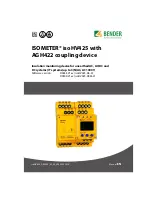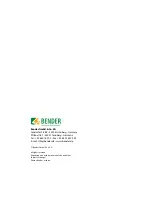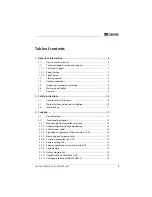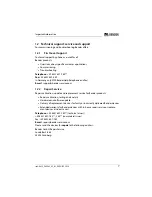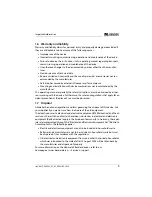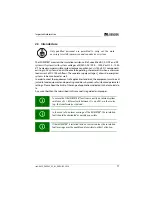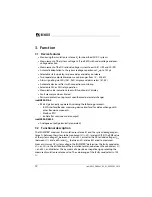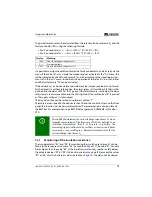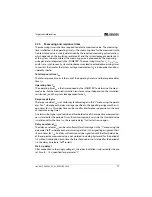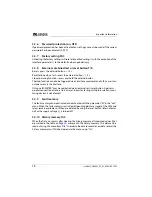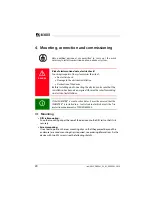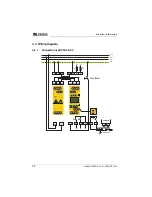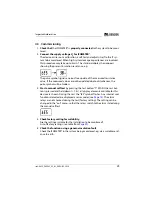
12
isoHV425_D00082_03_M_XXEN/05.2020
3. Function
3.1 Device features
Monitoring the insulation resistance
R
F
for unearthed AC/DC systems
Measurement of the system voltage
U
n
(True RMS) with undervoltage and over-
voltage detection
Measurement of the DC residual voltages system to earth (L1+/PE and L2-/PE)
Automatic adaptation to the system leakage capacitance
C
e
up to 150 μF
Selectable start-up delay, response delay and delay on release
Two separately adjustable response value ranges from 10…500 kΩ
Alarm signalling via LEDs (AL1, AL2), display and alarm relays (K1, K2)
Automatic device self test with connection monitoring
Selectable N/C or N/O relay operation
Measured value indication via a multi-functional LC display
Fault memory can be activated
Password protection to prevent unauthorised parameter changes
isoHV425-D4-4
RS-485 (galvanically separated) including the following protocols:
– BMS interface (Bender measuring device interface) for data exchange with
other Bender components
– Modbus RTU
– IsoData (for continuous data output)
isoHV425-D4M-4
Analogue output (galvanically separated)
3.2 Functional description
The ISOMETER® measures the insulation resistance
R
F
and the system leakage capaci-
tance
C
e
between the system to be monitored (L1/+, L2/-) and earth (PE). The RMS value
of the system voltage
U
n
between L1/+ and L2/-, as well as the DC residual voltages
U
L1e
(between L1/+ and earth) and
U
L2e
(between L2/- and earth) are also measured.
From a minimum DC system voltage, the ISOMETER® determines the faulty conductor
L1/+ or L2/-, i.e. the distribution of the insulation resistance between the conductors L1/
+ and L2/-, and indicates this by means of a positive or negative sign preceding the
measured insulation resistance value. The value range of the faulty conductor is ±100
%:

